






Recap | 16
2025 FAEA's Florida Student Art Assessment | 23
Arts in the Community: Exploring Sarasota Art Museum of Ringling College of Art and Design | 24
From the Field: Don't Worry, You Can Use Your Traditional Lesson Plans for Your ESE Students | 28
Online Inclusion Through Virtual Exchange as Piggybacking: Bridging Culture and Art Education | 32
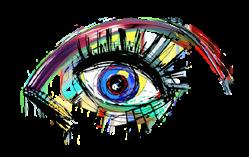
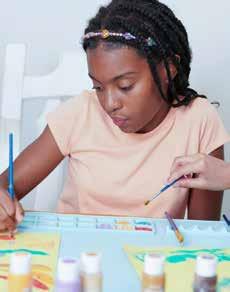

OUR COVER ARTIST
Ella Schwab (Grade 1)
Clay Bird Ceramics
Anona Elementary Teacher: Cheri Connolly Pinellas County
About Fresh Paint Magazine:
Fresh Paint is an award-winning, quarterly publication of the Florida Art Education Association, Inc. (FAEA) located at 402 Office Plaza Drive, Tallahassee, Florida, 323012757. The purpose of Fresh Paint is to provide members and stakeholders with information about FAEA programs, the latest advocacy reports on issues impacting art education, and articles of interest to art educators of all levels. This publication is distributed to over 800 art teachers, district art supervisors, museum educators, higher-education professionals, community art educators, and artists, as well as other state and national art associations. All issues are published digitally by FAEA.:
Fall Issue Conference Issue Winter Issue Spring/Summer Issue
FAEA 2024 Editorial Committee
Claire Clum, Chair
Priscilla Anderson
Christie Becker-Fitzgerald
Nicole Bizjak
& 2025 FAEA Committees | 31
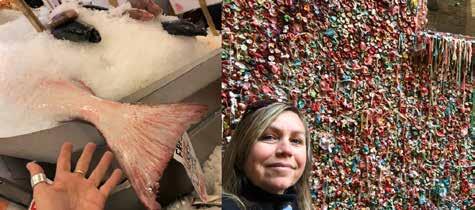
Rachel Fendler, PhD
Christy Garton
Heather Hagy
Dulcie Hause
Latonya Hicks
Laurie Hoppock, EdD Lark Keeler
Halina Kilburn
Lori Manning
Debra McGann, EdD
Kasey Power, PhD
Jennifer Wilkinson
Fresh Paint is made possible, in part, by the participation of the businesses whose advertisements appear in this issue. They make it possible to provide membership with a high quality publication and we gratefully acknowledge their support of Florida Art Education Association’s (FAEA) mission. We hope that you take special notice of these advertisements and consider the products and services offered. This is another important way you can support your professional association and the enhancement of Florida art education.
The publisher does not endorse any particular company, product, or service. FAEA is not responsible for the content of any advertisement and reserves the right to accept or refuse any advertisement submitted for publication.
Latonya Hicks FAEA President
Dear FAEA Family,

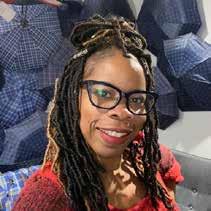
The FAEA team is hard at work planning something special for the summer! We’re thrilled to announce upcoming professional learning opportunities in South Florida. This collaboration promises hands-on workshops, immersive experiences, and a chance to recharge your creative batteries—all while soaking up the culture of sunny South Florida. Stay tuned for dates and details—we can’t wait to share more!
While we celebrate these opportunities, I want to speak to those art teachers who might feel like they’re out there on an island alone. If that’s you, or someone you know, please hear this: we’re knocking on your door! You are not alone. We want you on this team, sharing your gifts, ideas, and experiences with a network of people who truly get it. FAEA is your community, and together, we are stronger.
To everyone reading this, I encourage you to reach out to a colleague who might not yet be connected to FAEA. Let’s grow this family, one door-knock at a time. In the meantime, keep sharing your brilliance with the world and remember—your work changes lives.
With gratitude and excitement,
Latonya Hicks


Release Forms Due February 28, 2025
Florida Student Art Assessment
February 9: Artwork due February 28: Signed release forms and payments due
Conference Session Proposals
Submissions accepted February 1 – May 1
2025 NAEA National Convention
March 20-22 Louisville, KY
FAEA Awards Nominations
Submissions accepted April 1 – June 1
2025 FAEA Annual Conference
October 16-19 St. Petersburg
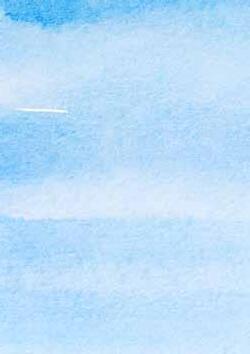










Ab ut FAEA
MISSION STATEMENT
The mission of the Association is to promote art education in Florida through professional development, service, advancement of knowledge, and leadership.
ADVERTISERS
FLORIDA STATE UNIVERSITY | 2
BLICK ART MATERIALS | 30
RINGLING COLLEGE OF ART & DESIGN | 40




PRESIDENT Latonya Hicks Pinellas County
PAST PRESIDENT
Nancy Puri Polk County
PRESIDENT-ELECT
Christy Garton Orange County
SECRETARY
Heather Hagy St. Johns County
ELEMENTARY DIVISION
Stephanie Scannapieco Duval County
MIDDLE SCHOOL DIVISION
Ashley DeMaio St. Johns County
HIGH SCHOOL DIVISION
Jacquelene Lieberman Broward County
SUPERVISION/ADMINISTRATION DIVISION
Laurie Hoppock, EdD Duval County
HIGHER EDUCATION DIVISION
Debra McGann, EdD Orange County
MUSEUMS & CULTURAL ORGANIZATIONS DIVISION
Dulcie Hause Duval County
LOCAL ART EDUCATION ASSEMBLY REPRESENTATIVE
Natalie Potacco Pinellas County
RETIREES’ REPRESENTATIVE
Debra Barrett-Hayes Leon County
MEMBER-AT-LARGE
Claire Clum Palm Beach County
MEMBER-AT-LARGE
Laura Hobby
Hillsborough County


Kathleen D. Sanz, PhD Board Consultant, FAEA
The 2024 election is over and now is the time for us to get to work! The Florida House and Senate committees and subcommittees were assigned in December. Legislation committee members will meet with other legislators, administration officials, and YOU. So, you need to be aware of bills and participate in their discussions.
The leadership of the Senate and the House of Representatives are key to legislation moving forward through the Bill process. It’s extremely important to know your legislators and the leaders.
Senate President, Senator Ben Albritton
President Pro Tempore, Senator Jason Brodeur Majority (Republican) Leader, Senator Jim Boyd
Minority (Democrat) Leader, Senator Jason W. B. Pizzo
Appropriations Committee on Higher Education
• Chair, Senator Gayle Harrell
• Vice Chair, Senator Jennifer Bradley
Appropriations Committee on Pre-K - 12 Education
• Chair, Senator Danny Burgess
• Vice Chair, Senator Geraldine F. “Geri” Thompson
Committee on Education Postsecondary
• Chair, Senator Alexis Calatayud
• Vice Chair, Senator Corey Simon
Committee on Education Pre-K–12
• Chair, Senator Corey Simon
• Vice Chair, Senator Alexis Calatayud
Speaker of the House, Representative Daniel Perez
Higher Education Budget Subcommittee
• Chair, Representative Demi Busatta
• Vice Chair, Representative Michael A. “Mike” Caruso
• Minority Ranking Member, Representative Gallop Franklin II
PreK-12 Budget Subcommittee

• Chair, Representative Jenna Persons-Mulicka
• Vice Chair, Representative Dana Trabulsy
• Minority Ranking Member, Representative Ashley Viola Gantt
Education & Employment Committee
• Chair, Representative Jennifer Canady
• Vice Chair, Representative Taylor Michael Yarkosky
• Majority Leader (WHIP), Representative Kimberly Berfield
• Minority Ranking Member, Representative Yvonne Hayes Hinson
Careers & Workforce Subcommittee
• Chair, Representative Berny Jacques
• Vice Chair, Representative Rachel Saunders Plakon
• Minority Ranking Member, Representative Alison Tant
Education Administration Subcommittee
• Chair, Representative Dana Trabulsy
• Vice Chair, Representative Dean Black
• Minority Ranking Member, Representative Angela “Angie” Nixon
Student Academic Success Subcommittee
• Chair, Representative Fiona McFarland
• Vice Chair, Representative Douglas Michael “Doug” Bankson
• Minority Ranking Member, Representative Bruce Hadley Antone
We ask that you let FAEA know if you are a constituent of a legislator who is the leader of one of the committees or a committee chair so we have a strong list of FAEA members' constituents. If you hear something – say something so that we can address any item that may impact arts education. It is vital that we continue to increase relationships with our senators and representatives. The decisions that are made at the state level impact all students and teachers. For a full list of Legislative Committee members, use the links below and/or go to the Advocacy Page on the FAEA website where they are listed.
Florida House Committees
Senate Committees
The FAEA Advocacy Committee participated in an annual meeting, along with the Florida Music Education Association (FMEA), the Florida School Music Association (FSMA), and the lobbyists from Capital City Consulting. There is an ongoing dialogue with the lobbyist to discuss legislation and develop a legislative platform for arts education. Once the platform is finalized, it will be posted on the FAEA website.
The 2025 Legislative Session begins on March 4, 2025, and the regular session is scheduled to end on May 2, 2025. We will continue to update you through the website and member emails about legislation that may impact fine arts specifically and education generally.
Whether a public, public charter, private, or home school, we can help to influence the decisions for our programs. In the coming months, schools and school districts will be determining their budgets for the 2025-2026 school year and funding decisions will be made locally. It is critical that you voice the needs of your program with your school administrators, the school board, and the school district administrators.
Know and talk with state-level decision-makers, including Governor Ron DeSantis, your senator, your representative, and the Commissioner of Education, Manny Diaz, Jr., who oversees the Florida Department of Education.
• Stay informed. Read eblasts from the FAEA office and participate in FAEA advocacy initiatives.
• Visit and/or call your legislators. Following the visit, make sure to let us know of any issues or concerns.
Advocacy is critical to our efforts to provide students and teachers with what is needed for the visual arts. BE THAT ADVOCATE!
Remember the Arts are Essential for all Florida students.

Kathleen D. Sanz, PhD


Stephanie Scannapieco Seabreeze Elementary Duval County
Happy New Year! I hope you got some rest and relaxation throughout the holiday season. As we get into the second half of the school year, I want to remind you about the Florida Student Art Assessment, formerly known as the K-12 Student Art Assessment & Virtual Exhibition. The deadline for this is quickly approaching. Sunday, February 9, the artwork submissions are due and the deadline for the payment and the signed release forms is Friday, February 28. This deadline is earlier than in the past because of new state statutes requiring permission forms. Be sure to gather that work now!
Even though I feel like we just left conference, committees are already hard at work getting ready for October. Be on the lookout for how to submit session proposals. You do not need to be on a committee to be able to submit a proposal. Those dates will be coming soon.
During our Elementary Division meeting, we had an opportunity to hear the amazing things happening in your programs and I want to remind you to continue to celebrate each other. You can nominate yourself or a colleague for the FAEA Member Spotlight. This is a huge way we can advocate for our programs, share what incredible things our students are working on, and recognize awards you’ve received for the awesome work you do, etc. Can’t wait to celebrate all of you!
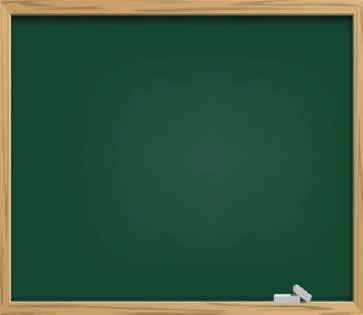

Ashley DeMaio Gamble Rogers Middle School St. Johns County
Happy 2025 Amazing Art Educators! For this edition, I want to focus on the FAEA Convention. Although we faced the challenges of a storm leading up to the event, it was truly uplifting to see so many educators coming together, creating, and thriving. As art educators, we understand the healing power of the arts, and I’m so grateful to have shared a space with all of you. This year’s convention featured incredible guests, events, and more—all thanks to the dedication of our board and the countless individuals who make it all possible. If you haven’t had the chance to complete the FAEA survey yet, please take a few moments to share your reflections. This survey is a powerful tool for providing feedback, which the board will use to improve future events and conferences. We truly want to hear your voice!
There are also many opportunities to get involved. At the Middle School Division update, I shared several new opportunities available through FAEA. For example, we are launching a Member Spotlight on the FAEA website, as well as a feature in Fresh Paint Magazine. If you know an art educator doing amazing work, please consider nominating them. We’d also love to see highlights or articles submitted to Fresh Paint—a great space to showcase the fantastic projects, student art, and inspiring work happening in your classrooms. Lastly, I want to share a highlight from this year’s “Artful Happenings Room.” This dynamic and immersive space, inspired by Allan Kaprow’s historic Happenings, was designed in response to your requests. It wasn’t your typical session; it was a vibrant, creative hub, a place for ongoing learning, meaningful discussions, sharing best practices, and spontaneous collaboration. Each hour brought a new topic or session. This year, we had the Advocacy Team create a mural, a space for tea and relaxation, a station for creating visual journals, and even areas for dancing, storytelling, and blanket making. It was truly an amazing space to connect with fellow educators and learn new skills.
As we head into spring, I encourage you to reflect on the convention and share your thoughts in the survey—what were your favorite events, and what would you suggest for next year? Until then, I wish everyone peace, love, and art from the heart.

Jacquelene Lieberman Marjory Stoneman Douglas High School Broward County
Reflecting on the recent FAEA Conference, I am filled with inspiration and excitement for the opportunities that lie ahead. The sessions offered valuable insights into innovative teaching strategies, student engagement, and the evolving role of art education in shaping young minds. I encourage all of you to consider submitting session proposals for next year’s conference. It’s an excellent opportunity to share your expertise, and while the dates for proposals have not yet been set, starting to plan early can make all the difference!
As we look to the future, I also want to remind you to submit your students’ artwork to the newly renamed Florida Student Art Assessment (formerly the K-12 Student Art Assessment & Virtual Exhibition). This is a fantastic chance to showcase your students’ hard work, with the submission deadline for artwork set for February 9. Be sure to submit payment and signed release forms by February 28.
With the Spring semester ahead, it’s important to stay focused and energized. A few tips: keep your curriculum fresh by integrating current events and new techniques into your lessons, and don’t forget to encourage your students to submit to local and regional exhibitions!
Also, spread the word about the Florida Seal of Fine Arts —a great recognition for your students. And remember to nominate deserving colleagues for the FAEA Member Spotlight or for upcoming FAEA Awards. Nominations open this Spring!
Let’s continue to support one another and elevate art education across Florida!


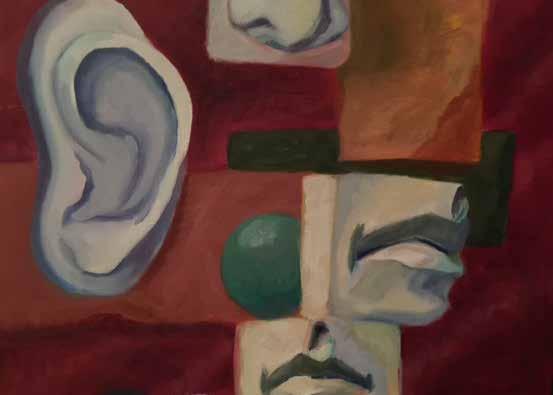
My favorite painting medium is oil. I love how expressive the colors can be, and how oil paint allows me the flexibility to step away from a piece and return to it with fresh eyes. I enjoy working on a larger scale, and I constantly challenge myself to incorporate unexpected colors into the faces I paint—colors that wouldn’t traditionally appear in my still-life pieces. This smaller painting is a preliminary sketch for a larger a larger-scale work that speaks to society, pressure, and stigma. Though it depicts an ordinary still life of facial features, it also serves as a metaphor for the rush and stigma surrounding appearances.
Membership is open to all art teachers, art supervisors, arts administrators, cultural professionals, university professors and students, those who are retired from the profession, and anyone passionate about our goals.

Natalie Potacco Curlew Creek Elementary Pinellas County
As we enter the second half of the school year, I hope everyone feels recharged and inspired from this year’s conference in beautiful Saint Petersburg! This midpoint is a wonderful time to reflect on the impact we’re making and to set fresh goals for our students and classrooms. It was incredible to connect, learn, and celebrate the transformative


This functional piece of artwork is inspired by my childhood love of watching the leaves change colors. I would often make a huge pile of leaves and jump into it. I wanted to create a bowl that is functional and sentimental. The array of colors are vibrant which brings a spark of joy to anyone who encounters it.
work happening in art education across Florida.
Looking ahead, don’t miss the opportunity to showcase student talent in the Florida Student Art Assessment. The deadline for artwork submissions is February 9, 2025, with release forms due by February 28, 2025. Let’s keep pushing for creativity and excellence in student artwork!
Let’s not forget about the Florida Seal of Fine Arts! This initiative recognizes high school students for their commitment to the arts. Be sure to encourage your students to apply for this honor, celebrating their dedication and accomplishments in fine arts.
And lastly, let’s take a moment to honor our colleagues! Don’t forget to nominate a teacher making a difference for the Member Spotlight. It’s a wonderful way to recognize those going above and beyond for their students and communities.
Thank you all for your commitment and passion—let’s keep inspiring one another and our students!

Dulcie Hause Cummer Museum of Art & Gardens Duval County
Happy New Year! January always brings a mix of reflection on the last year’s ups and downs as well as this year’s opportunities. Last year, despite last minute weather challenges, we had an amazing conference, bringing together a vibrant community of educators, artists, and creative professionals. For those that were able to attend, I hope you felt the same inspiration with the mix of hands-on workshops, presentations, and keynotes sparking new ideas and approaches to our work.
Last year, our division experienced a large growth as well! We have had many new members join us from the Tampa/ St. Pete area, thanks to our conference location. I am hopeful that in sharing with our colleagues how successful, fun, and inspiring the conference was in St. Pete, we will be able to continue our growth.
As we step into the new year, I hope we are able to continue cultivating a space for our professional growth among one another. The more that we share and learn from one another, the stronger our division will be. Stay tuned for details on our next virtual division chat!


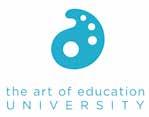
Florida School of the Arts
Rollins Museum of Art
Sam Flax Orlando

Dr. Laurie Hoppock
Duval County Public Schools
Duval County
I hope the school year has treated you well thus far! It’s time to start gearing up for exhibitions, contests, and tracking any high schoolers who are on track to earn the Florida Seal of Fine Arts!
FAEA’s Florida Student Art Assessment submission window is open now. Encourage participation in this state-wide exhibition opportunity to take part in a professionally adjudicated event, gain feedback about their work, and to see the works being created by their peers around the state. For your high school art students, participation in this program satisfies one of the requirements to earn the Florida Seal of Fine Arts. Because this is a virtual exhibition opportunity, participation in this


event does not prevent a student from entering the same work in other exhibition opportunities, like district exhibitions or Scholastics.
This is also the time of year when we start preparations for our annual district art exhibitions: how do you celebrate your student-artists locally? Are you trying something new this year, like adding film or animation content? What is something unique you do in your district? We would love to hear and learn from you! Consider emailing the FAEA Board with the unique practices you employ for your district or local exhibitions. We would love to celebrate with you and share best practices!
Finally, our newest state initiative: the Florida Seal of Fine Arts. Coordinate with your district’s counseling team and fine arts team to ensure you have a plan to roll this program out ASAP, notifying qualifying students and their educators as well as ensuring their award is marked on their transcript and the Seal will be affixed to their diploma. Have a question about this program? Feel free to email me at supervision@board. faea.org so we can plan, collaborate, and make this program amazing for your students!

Dr.
Debra McGann
University of Central Florida Orange County
Happy New Year! Hope your holiday break was enjoyable and relaxing.
The beginning of a New Year is always an optimal time to reflect on the past and, of course, to set new goals in a variety of areas of our lives.
There were so many informative and enjoyable sessions at this past FAEA 2024 conference. With that in mind, it may be good to begin planning next year’s presentation, although the submission dates are not available just yet.
Having the opportunity recently to see many astonishing works of art at museums and other arts venues, including those at our Fall ’24 FAEA conference, has inspired me to further develop some current ideas for my own artwork.
Improving and/or revising ideas we’ve already been thinking of, or even going in a completely new direction with our artwork and scholarly activities may mean finishing a work of art using a theme or concept we have been pondering for a
long while. On the other hand, it may be the birth of a completely new creative endeavor or research topic.
Also in Art Education news, the Florida Seal of Fine Arts was approved as an award for high school students. Please see the following link for more information: https://info. fldoe.org/docushare/dsweb/Get/Document-10220/dps2024-56.pdf
For the FAEA “Member Spotlight”, the Advocacy Committee will be selecting members to spotlight on social media. You may nominate yourself or another art educator: https://faea.org/programs/member-spotlight/
This coming Spring, nominations for the FAEA Awards program will open April 1.
All the best to you as you pursue your goals and aspirations this New Year/Spring season!

Claire Clum (Member-at-Large)
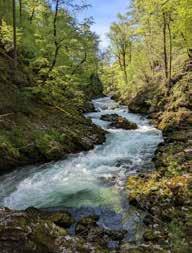
Lake Bled Ravine 2023 Photography I dabble with a variety of media and processes - drawing, jewelry making, collage, and photography. There is so much to explore!

Retirees' Representative
Debra Barrett-Hayes Leon County
Wow…exactly what we needed! Spending time with like-minded creatives, sharing, caring, learning, exploring, and making new relationships. What a whirlwind, St. Pete welcomed us with open arms: The Dali, Imagine Museum, The James, and MOFA made us feel right at home amongst their precious works of art!
“The Big Give” organized by the RATs (Retired Art Teachers) was FAB; thanks to everyone who donated supplies and resources. Our beloved BATs arrived and “shopped” until they couldn’t carry their loot. What fun to watch the excitement and joyful faces. Thanks to “the Bonnie(s)”, Ruthie, Sandy & My Gabbi, the miracle workers! Following the “Big Give” was the inaugural “Speed Dating between BATs & RATs”. You could feel the relationship vibes in the room, everyone enjoyed heartfelt conversations. We are “better together,” reaching out and sharing with someone who knows how you feel. We hope to repeat and invite all BATs and RATs to join!
The RATs Social Gathering in the President’s Suite was a nice relaxing time for all. Special thanks to Scott Dick for adult beverages and to Barb, Ruthie & Painter Hayes for delicious snacks and of course, Madame Hicks’ Presidential Suite. We appreciate you!
Did you see the Exhibitor’s Hall Art Auction? Thanks to our Donors and Bidders, all proceeds benefit FAEA. Thanks to Jenny Jones for helping us advocate for the arts and Pat Miles for this connection.
Do you know a great art educator? Nominate them for an award. It feels great to recognize excellence in and amongst us!
Fresh Paint is a terrific marketing tool for businesses and organizations to reach art educators and decision-makers.

OCTOBER 16-19, 2025
Be a part of the 2025 FAEA Annual Conference and share your expertise with fellow art teachers throughout the state. Share your deep knowledge and instructional strategies and become a conference presenter. Consider presenting historical, socio-cultural, philosophical, and/or contemporary processes.
If you are a secondary, higher ed, or museum educator, we encourage you to submit a session proposal for the opportunity to present at this year's conference. Presenters may share ideas about emerging artists, advanced artists, and educational practitioners.
ART FORUM (50 MINUTES)
Share a topic through a presentation that will inform and motivate. This should be a lecture or a clinic session with interactive Q&A. Not a hands-on activity.
Hands-On Workshop Session (90 Minutes)
Lead an art-making experience that engages attendees in an in-depth art medium strategy or process.
Demonstration Session (30 Minutes)
Illustrate a topic through an exploration and investigation of an art technique that will inform and inspire.
FAEA invites all art educators to participate in Youth Art Month (YAM), a national program that provides a forum for recognizing skills developed through visual arts experiences, including problem-solving, creativity, observation, and communication.
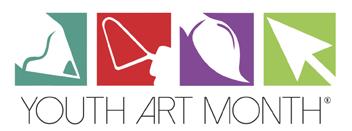
Celebrate YAM during the month of March with something as simple as a single class learning activity to a collaborative art exhibit. Celebrations should focus on the value of arts and the positive and creative impacts it has on the students, schools, and communities.
VISIT THE FAEA WEBSITE TO LEARN MORE ABOUT YAM AND HOW TO GET INVOLVED.
Support art education in Florida by becoming an FAEA Patron! With your donation, FAEA will continue to grow its programs for teachers and students, strengthen united advocacy efforts, and improve professional learning opportunities for members. Visit FAEA.org/donate.
Patricia Lamb In Memory of William & Madge Kinsaul
Debi Barrett-Hayes In Memory of Susan Weinstock
Judith Evans
FAEA thanks all of the individuals who have graciously donated to the Association. If you would like to donate to FAEA, please visit FAEA.org/donate.
Michelle Akimenko
(In Memory of Christopher Ryan Fink)
Claire Clum
Ashley DeMaio
Patricia Denuzzio
Sadie Figueroa
Allison Fiore
Anne Grey
Alice Haynes
Laurie Hoppock
Miriam Machado
Margie Matheson
Patricia Miles
Cindy Oakes
Natalie Potacco
Marilyn Proctor-Givens
Cherelle Smith
(In Memory of Cora Lee Ashley)
Kelly Warne
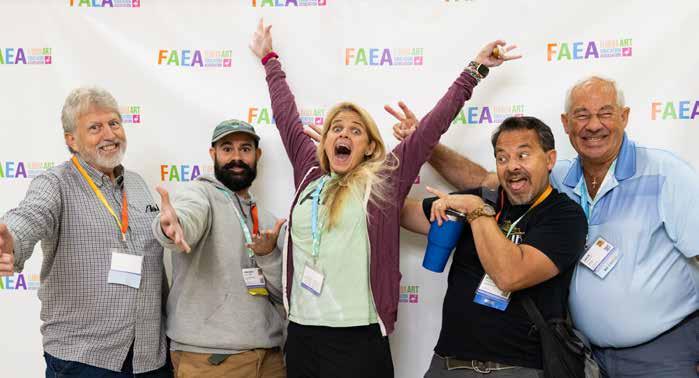
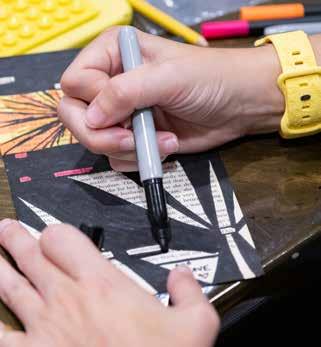
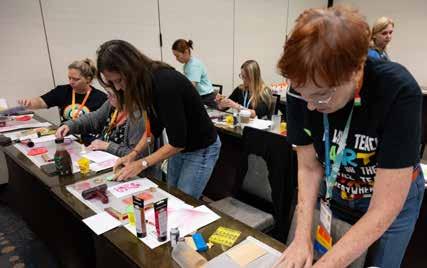
In boiling water, a potato softens, an egg hardens, but the mighty coffee bean transforms the water into something entirely new. It doesn’t let the pressure define it; it defines the environment around it. This idea mirrors the spirit of the FAEA community. When faced with challenges, we don’t shrink or stiffen—we innovate, adapt, and make the moment our own.
Just as St. Pete began recovering from the aftermath of a hurricane, we arrived not as mere visitors, but as coffee beans—bringing energy, creativity, and purpose to every
corner of the city. Our annual conference didn’t just happen—it made an impact. Together, we brought art to life, filled the air with inspiration, and left a lasting impression not only on local businesses but also on the hearts of the community.
The dynamic trio of sponsors, partners, and the Retirees Division outdid themselves yet again, offering unwavering support to our newest and hurricane-impacted teachers. If you couldn’t join us, you were truly missed—but don’t worry! Keep reading to experience some of the magic.

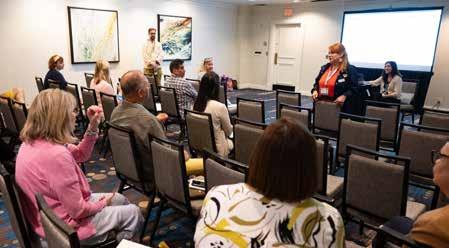
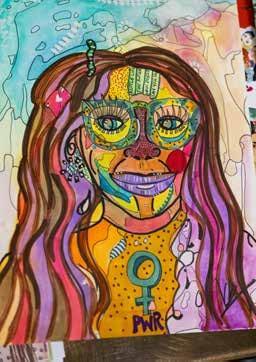
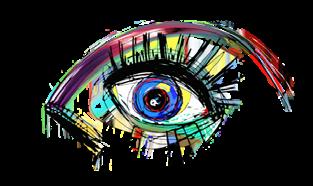
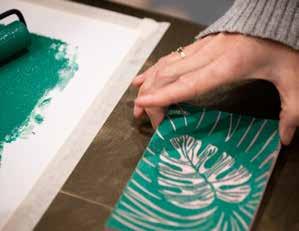


• 489 Attendees from 43 Florida counties
• 86 Workshops
• 68 Art Forums
• 5 Demonstrations
• Sponsored Receptions and the Member Awards Breakfast
• Thursday morning Keynote, book signing, and coffee talk with #1 New York Times bestselling author and illustrator Tony DiTerlizzi
• Saturday afternoon Keynote with mural duo Painter Hayes
• Free Admission with annual meeting badge to four local museums—The Dalí Museum, Imagine Museum of Contemporary Glass Art, The James Museum of Western and Wildlife Art, and the Museum of Fine Arts, St. Petersburg
• Rooftop Board Meet-N-Greet
• Exhibit Hall with vendors and service providers
• Art Happenings - an innovative space that was absolutely invigorating
• The FAEA Art Festival: The Ignite Magic Market with music, food, dancing, art-making, and art for sale
• And most impressive of all, a whole lot of love!

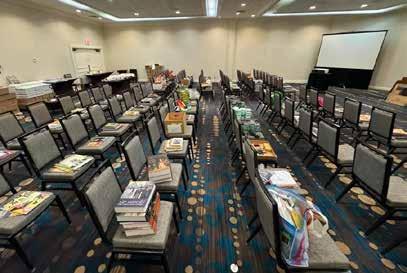
The Retirees Division, sponsors, and partners outdid themselves yet again, offering unwavering support to our newest and hurricane-impacted teachers. From sharing supplies to lending a listening ear and words of wisdom, their generosity made a lasting impact.
Many presenters and award winners shared their time, talent, and yes, even their dance moves, making this year’s conference truly unforgettable.

We extend our deepest appreciation to: Conference Chair and current President, Latonya Hicks; the Professional Learning Committee; the Center for Fine Arts Education staff; and the dedicated FAEA Board of Directors..
But most importantly, we thank you—our incredible members—for being the heart of this annual gathering.
This professional development experience is only possible because of the dedication, collaboration, and passion of




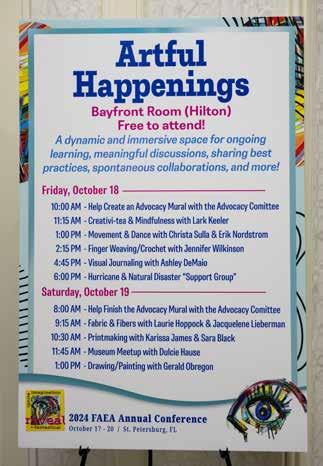

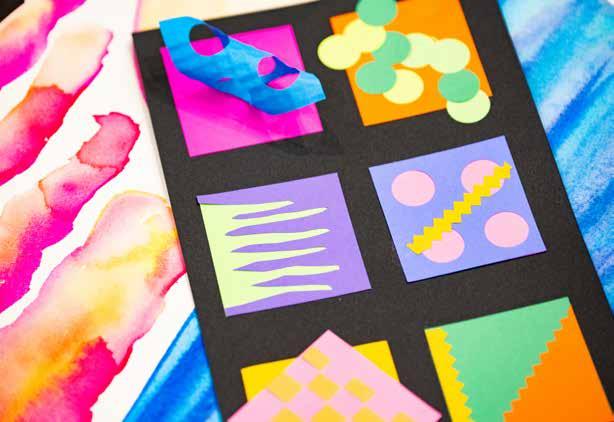
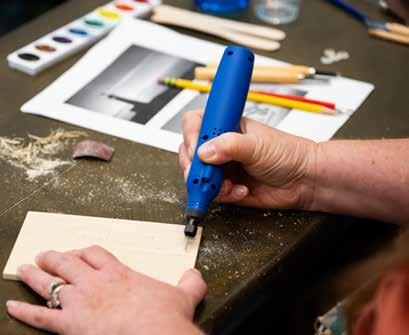
individuals like you—committed to advancing art education and inspiring creativity across Florida. For that, we are endlessly grateful.
As we look ahead, know that we need and value your continued participation. Mark your calendar now for the 73rd Annual Conference in—yes, you guessed it—St. Pete, Florida, October 16-19, 2025. Have a great idea for a
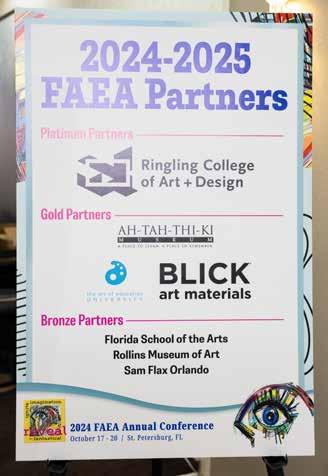
session or workshop? FAEA will begin accepting proposals this spring, and we can’t wait to see what you’ll bring to the table.
Thank you, again, for your unwavering commitment to visual arts education, for the vital work you do every day, and for ensuring the arts thrive across Florida. FAEA is so grateful to every member, volunteer, exhibitor, sponsor,


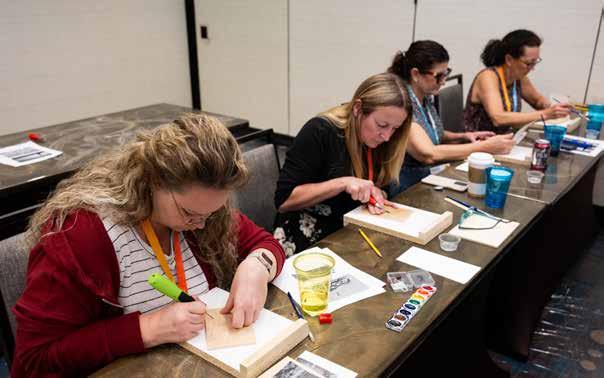
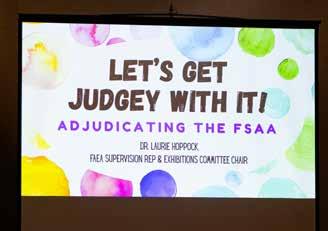

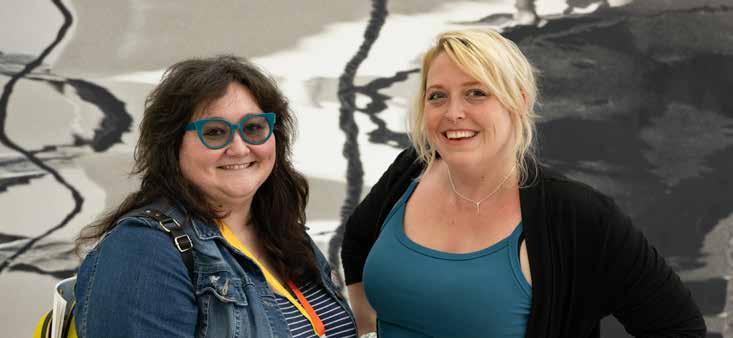





and presenter who made the 72nd Annual Conference possible.
This year’s gathering proved what happens when art educators face challenges together—we don’t just adapt, we transform. If this is what we can accomplish during
a stormy season, just imagine the brilliance we’ll bring to St. Pete when we gather here again under clear skies. So let’s keep brewing that bold coffee—because together, we’re not just making an impression, we’re changing the world around us.
FAEA is pleased to provide the 2025 FAEA's Florida Student Art Assessment to our membership. The purpose of the program is to serve as a statewide assessment opportunity for visual art and to promote the achievements of students enrolled in visual art classes throughout Florida.
• FAEA members are eligible to submit one entry per student
• $5 entry fee per artwork submitted
• All mediums are accepted as long as the work can be submitted as a JPEG image file
• Entries must be created exclusively by one student without the assistance of another student, teacher, or artificial intelligence (AI)
• Student artwork entries must be submitted by February 9, 2025
• Payments and signed releaseforms are due by February 28, 2025
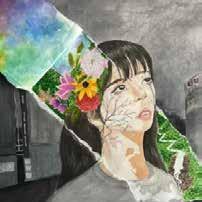
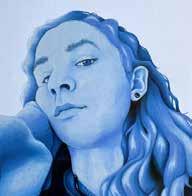

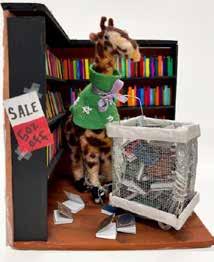
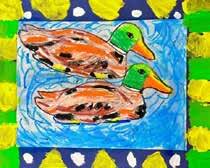
Entry requirements must be complete to be eligible.
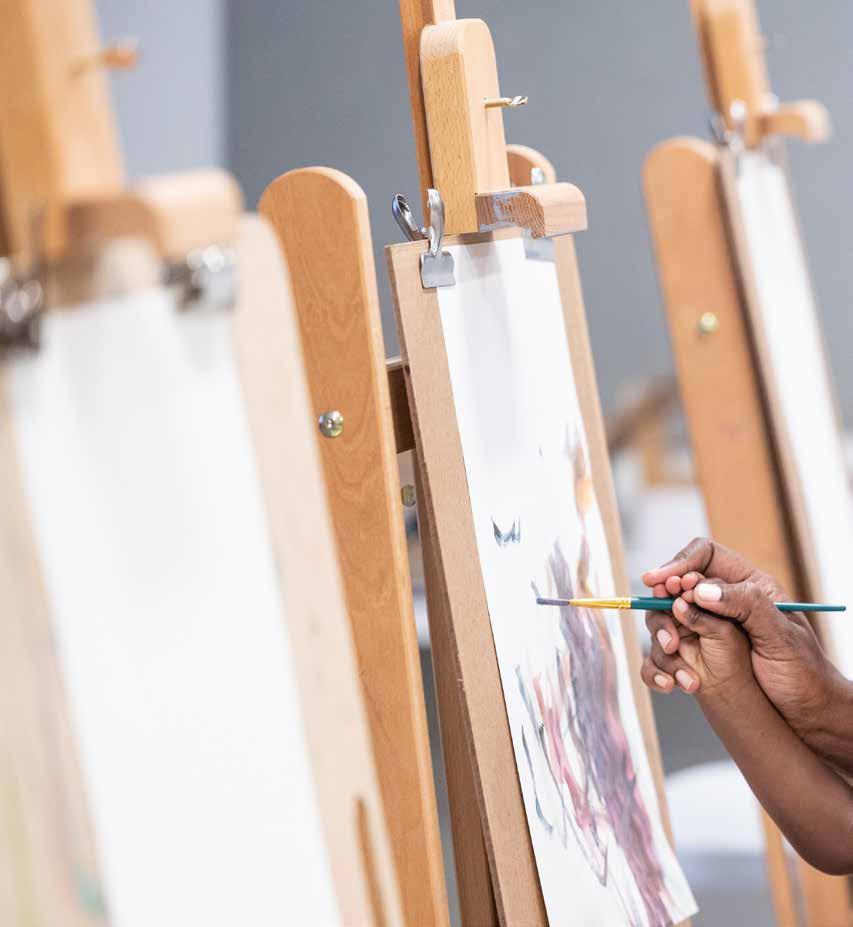
This column provides FAEA members with information about Florida cultural organizations and the academic offerings they provide.

The Sarasota Art Museum, a dynamic part of the Ringling College of Art and Design, offers a rich tapestry of contemporary art exhibitions and educational resources designed to inspire and engage the community. Educators will find the museum is a treasure trove of
materials and programs that can enrich classroom learning and foster creativity.
The museum’s rotating exhibits feature diverse works by contemporary artists from around the globe. These exhibits often explore pressing social issues, innovative art techniques, and
cultural themes, making them relevant to educational settings. Past exhibits have included multimedia installations, sculptural works, photography, and painting, reflecting a wide array of artistic practices.
Impossible to miss, the site-specific
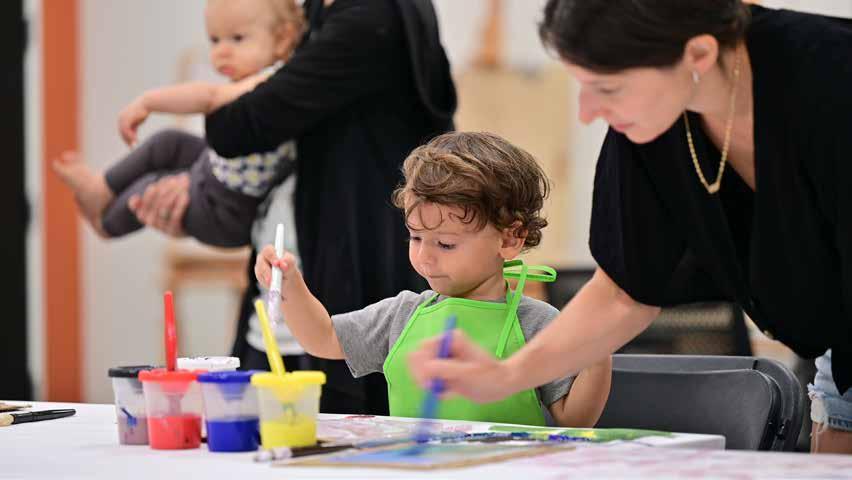
art installations are sure to engage students immediately. On the approach to the building stands Complexus, a 70-foot tall brilliant red steel sculpture by John Henry. From the ground, museum attendees view a glimpse of Amalgam by Molly Hatch, as it can be seen through the brick archways of the Schmidt Loggia. 28 Colors by Leah Rosenberg greets you at the front desk, and winds up through the stairwell of the museum.
The Museum's focus on interdisciplinary art is notable with exhibitions that combine technology with environmental themes or historical narratives. Teachers can use these exhibits as springboards for discussions about topics ranging from sustainability to storytelling through visual mediums.
The Sarasota Art Museum is committed to serving the community as an educational hub. It provides
a variety of tools and programs specifically designed for teachers. To bridge the gap between museum exhibits and classroom teaching, the museum provides detailed curriculum guides aligned with state and national standards. These guides often include pre-visit and post-visit activities, discussion prompts, and creative projects that allow students to interact meaningfully with the exhibits.
Teachers can organize field trips to the museum with options for guided tours led by trained docents or self-guided experiences tailored to specific themes. Tours are designed to be interactive, encouraging students to ask questions, share interpretations, and connect the artwork to their studies. Free, in-person school tours are on Tuesdays and Thursdays at 10 a.m. and 11 a.m. Free transportation can be arranged for schools in Manatee County.
The museum offers workshops where educators can deepen their understanding of contemporary art and its applications in the classroom. These sessions often include strategies for integrating art into STEM and humanities curricula along with hands-on activities to engage students.
As part of its educational mission, the museum hosts intergenerational workshops where students can create their own art inspired by the exhibits. These hands-on activities are an excellent way to reinforce concepts like perspective, storytelling, or cultural expression. The Creation Lab focuses on Visual Art and ELA while the Discovery Lab bridges art with math, science, and architecture.
Recognizing the importance of accessibility, the Sarasota Art Museum also provides digital resources. Teachers across the state and beyond
can access virtual tours, artist talks, and online lesson plans that make contemporary art accessible to students. These resources are ideal for classrooms unable to visit in-person or teachers looking to supplement their lessons with high-quality content.
Teachers can stay informed about upcoming exhibits and educational programs by joining the museum’s educator mailing list. The museum
is planning to formulate an Educator Advisory Committee.
The Sarasota Art Museum is more than just an art museum; it’s a vibrant educational partner for educators. By connecting contemporary art to classroom learning, the museum fosters critical thinking, creativity, and cultural awareness among students. Whether through in-person visits or digital resources, the museum empowers educators to bring the transformative power of art into their teaching.
For more details on exhibitions and access to teacher resources, visit the Sarasota Art Museum of Ringling College of Art and Design’s official website at https://www. sarasotaartmuseum.org/ . You can explore virtual tours, download lesson plans, and plan visits tailored to your needs.
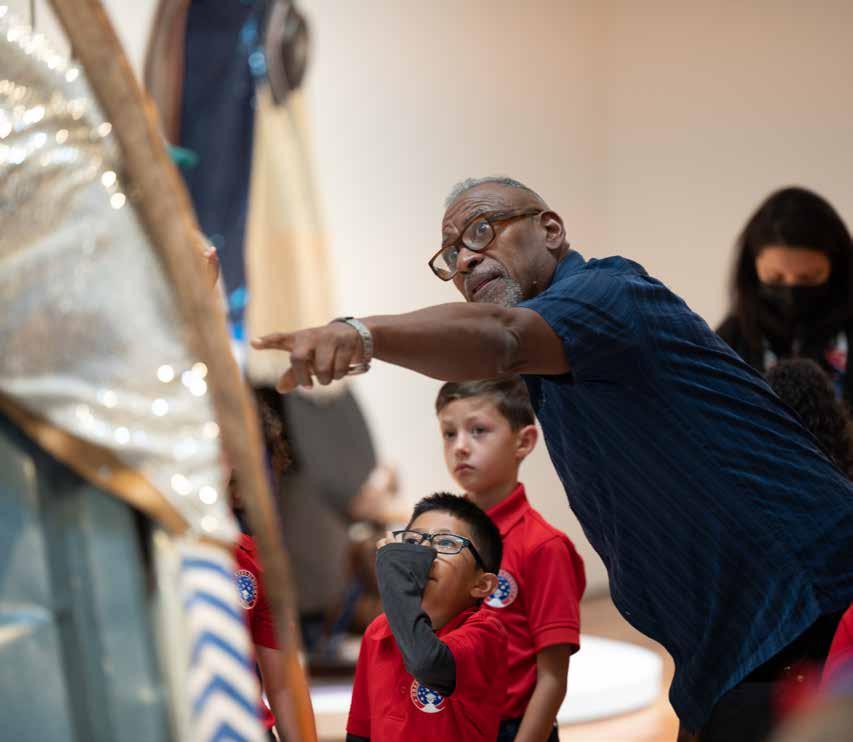
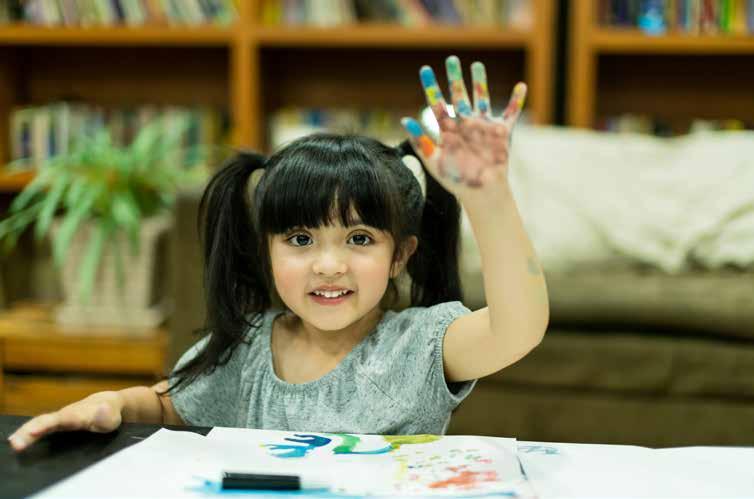
By Zachary C. Thompson, Art Instructor at Richard L. Sanders School in Pinellas County and FAEA Advocacy Committee Member
It’s 7 a.m. on a Monday morning, you are awake and about to taste your first sip of coffee. The lesson plans you perfected over the weekend are complete along with the supplies you have ready
to roll out in your class. You are about to put on your favorite work sweater that all your students make fun of you for wearing, along with your colorful sneakers that are extra good for getting those steps in so you can win the top stepper award, AGAIN, this year for your schools wellness competition (it’s a $25 dollar Publix gift card and you’ll use it to buy a cookie cake for yourself,
YOU EARNED IT). You pack your awesome lemon-colored 22 oz. hydro-flask you bought at Ross for a steal filled with your awesome sugar cookie flavored ice coffee with creamy oat milk in your bag before jetting off to work.
You are listening to your favorite podcast, there's no traffic, and you know that you will crush it today with no worries until… you get to school,
walk to your class, and just as you open your classroom door to your room you realize you INDEED forgot something important.
Today, one of your adaptive students is getting observed by someone from county for their IEP to keep their ESE funding and you don’t have any lesson
plans prepared for them along with their 1 on 1 aide being absent today! IT’S THE END OF YOUR AMAZING ... Or is it?
Relax. Breathe. Center. It’s all good. You can do the same work with them that the rest of the class will have, but you should be open to the results. The
truth is that your ESE students are highly capable of achieving everything your traditional students can achieve, but the focus can’t be on a timeframe or even a standard rubric of measurable aesthetics but rather a measurement on merit and consistency. Does that make sense? So, you are doing a watercolor

self-portrait assignment with your students, but Lawrence doesn’t like to sit still long enough to get anything done that involves having patience. Lawrence also doesn’t like being near or close to water because of the feeling on his skin. You can’t give him any art tools that have the possibility of being sharp since he’s self-harming at times, and Lawrence doesn’t like looking into mirrors at himself. Sooo, that about fully trashes any hopes of you being able to do this assignment, right? Well, not really. There’s a way, remember to be open to the results.
Lawrence can sit still for the most part, he just needs to work in a setting that doesn’t feel intrusive or obstructed. Sitting at a structured desk makes him
uneasy because it means that something important is expected from him. Simply change the setting for him to be on the floor since he loves to lay on the floor because he loves the feeling of carpet on his skin. You direct him to sit on the floor, near the corner of the room since he wants to have space aways from the group, and he can work there. Instead of using watercolor, you give him pastels to create with since the texture of pastels are pleasant for him to use, and he loves the smell too. This also allows for him to work with an art tool that isn’t considered sharp or possible of intentional self-harm. Finally, instead of giving him a mirror that he is afraid to look at or could also break in a behavioral outburst, you ask if you can take a photo
of him on the iPad. He says, “Yes”. Just in case, you use the school iPad so there isn’t any use of your personal phone, and he has a media release as well so that’s even better. HE gets to control what is being seen and if he wishes to hide a bit, he can. He uses the image off the iPad to create his pastel self-portrait on watercolor paper and it will be awesome for him to complete something that he’s never created before.
All good now? Almost, just please hold on a little longer with me…
The most important objective you must always hold close to your heart and mind is sincerity. We can choose to define sincerity as an ideology instead of a word, if we hold the meaning of sincerity as an absolute for ourselves
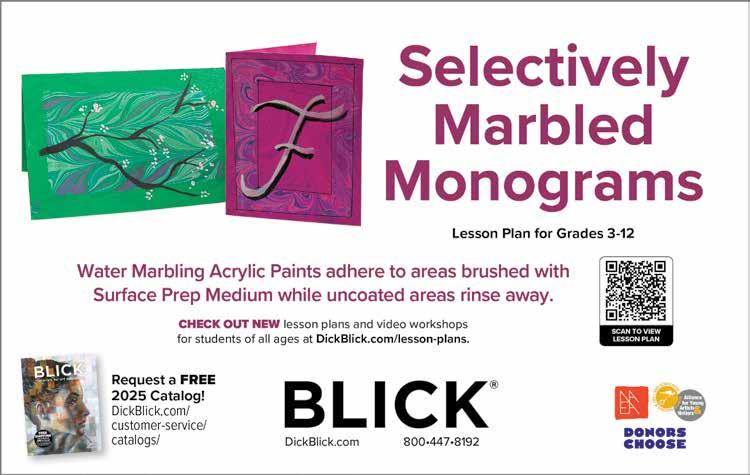
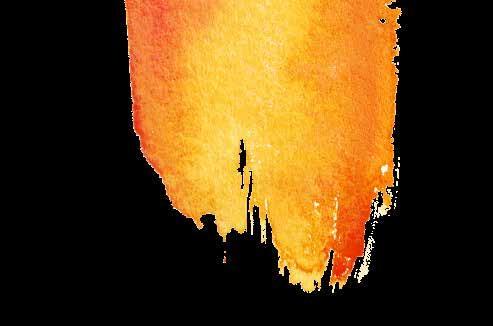

toward all our teaching methodologies. Sincerity in our classroom means that the students can be their authentic self without judgment. It also means we allow ourselves to be seen authentically as a person, first, and teacher, second. For example, never attempt to be someone you aren’t in the classroom just because you read somewhere that listening to music your students listen to will help you understand them better. If you try something new and love it, great! But, if you try something and you don’t like it, don’t be disingenuous. Be honest. Your students will respond to your honesty just as you respond to their honesty. If you are accused of being uncool, OWN IT! It’s cool to be uncool! Be the best at being uncool and remember that you know what it feels like to be their age
and asking those questions about yourself, searching for meaning in things, but they don’t know what it’s like to be YOU yet. Be their guide through this creative journey. Be their light.
Sincerity is also understanding that being a student with exceptionalities can be challenging on many levels. You may never understand what it means to be them or what they truly go through and that is fine. Listen to them, work WITH them, and learn together.
We have the best teaching job in the world. We are Art Teachers. We teach aesthetics. We admire life, in all that life embodies, every day. You are beautiful. They are beautiful. Life is everything.
ADVOCACY COMMITTEE
Laura Hobby, Co-Chair
Natalie Potacco, Co-Chair advocacy@board.faea.org
AWARDS COMMITTEE
Nancy Puri, Chair pastpresident@board.faea.org
EDITORIAL COMMITTEE
Claire Clum, Chair editorial@board.faea.org
EXHIBITIONS COMMITTEE
Laurie Hoppock, Co-Chair
Ashley DeMaio, Co-Chair supervisor@board.faea.org
FINANCE/EXECUTIVE COMMITTEE
Latonya Hicks, Chair president@board.faea.org
PARTNERS & SPONSORS COMMITTEE
Christy Garton, Chair presidentelect@board.faea.org
PROFESSIONAL DEVELOPMENT COMMITTEE
Latonya Hicks, Co-Chair
Christy Garton, Co-Chair presidentelect@board.faea.org
SOCIAL MEDIA COMMITTEE
Stephanie Scannapieco, Chair elementary@board.faea.org

By Dr. Heidi Powell, Director of Art Education Online & Assistant Professor at the University of Florida
Have you ever heard the acronym FOMO, Fear of Missing Out? And have you ever had a family member who is so invested in wanting to know what is happening in your world, where you are going next, and in general what you are up to on a daily basis? For me, it’s my Mother. She needs a personal connection that can’t be satisfied with a Facebook, X, or Instagram fix since she doesn’t participate in social media platforms. My mother’s FOMO is so acute that she wants to hear the sounds, see the environment, and feel the layered textures related to the senses of whatever location I have framed as a classroom, research site, or inquiry space. She doesn’t want surface platitudes but digs deeper and wants to know what I think of looking at this or that artwork in a museum, or that sculpture in a public place, or the materials I am working with in the middle of nowhere. She wants to feel the nitty gritty of the place and culture of where I am teaching, learning, or researching, and how it connects and relates to her world. She wants, to the best of her ability, to expe-
rience the places I am, as if she too were there. So, whether at home, or traveling the country, or abroad, I take her on walks with me, museum visits, have conversations about what we are seeing, learning about, and so much more, all through the magic of Facetime. She Piggybacks and drops in (through technology) from her home especially while on my journeys of teaching and researching adding her voice as part of the journey narrative, where provocation lends to Wonder in the inquiry process.
This informal familial case study of transmogrify from FOMO to Wonder through Virtual Exchange has shown me that in the virtual globalized and interconnected world, our dynamic position as art educators gives us opportunity to evolve, engaging those around us, especially our students, in novel ways that can equip them with the skills and competencies necessary for constructive engagement in global art education settings. In sharing my experiences with my mother synchronously and on occasion asynchronously, I wondered why not try synchronous and asynchronous place-based Virtual Exchange (VE), which I call Piggybacking, with students. Piggybacking, an adap-
tive approach evolving from VE, refers to when a person tags along virtually with another person who is learning at an educational/research/community site giving them access/authorization or entry to remotely learn with them (Powell, 2020). This can happen from local to global locations. Piggybacking engages the senses through measures of experience allowing for intercultural place-based arts learning. Traditionally and prior to COVID-19, art educators in classroom settings relied heavily on face-to-face engagement while using technology to supplement teaching and learning. During the pandemic “art educators had to manage new instructional delivery systems” (Sabol, 2022, p. 127) while trying to meet the emotional, instructional, and overall academic needs through a virtual education space which was sometimes successful and sometimes not so much. Now postpandemic and looking back we can see more clearly how technology as virtual classrooms or supplementing face-to face instruction can better meet the intended objectives for our art education students.
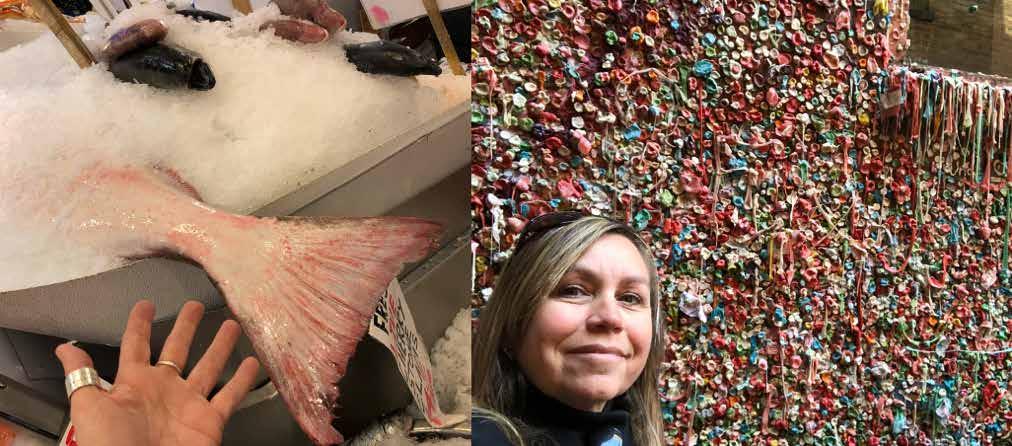
On one journey, as I walked my mom through the sights and smells of fishtails in Seattle’s Pike Place Market, we analyzed the Pollock style Gum Wall below in the Market alley (See Figure 1), I was reminded of the value of VE.
VE evolved from Telecollaboration (Warschauer, 1995) to become a powerful educational blueprint that leverages technology to provide educational opportunities beyond and in the classroom setting. These technological opportunities provide for “individuals who have limited access” (Risner & Kumar, 2016, p. 287) to opportunities outside of their normal learning environment. VE fosters intercultural competence, inclusivity, and meaningful dialogue across diverse and geographically separated groups, and was initially started as a process for language learning called the COIL approach (Rubin, 2017). VE is grounded in these educational research and evidence-based practices which highlights its capacity to create equitable
and inclusive learning environments. Unlike traditional physical exchanges, VE relies on digital platforms, making it more accessible and scalable. It removes barriers associated with local, regional or international mobility, opening opportunities for students from diverse and geographic backgrounds to connect with learning about art, being with art, and collaborating in arts spaces. It has now been adapted to include many disciplines and variations such as Piggybacking serving research-supported teaching practice from local to global art education. Sims (2022) underscores that VE cultivates intercultural competence or “Cultural Intelligence” (p. 137) through shared learning environments. This cultural intelligence can develop organically through responsive dialogic collaboration or through organized and more structured curricular elements facilitated through technological interactions, both of which encourage reflection, dialogue, collaboration, and problem-solving in art learning. Piggybacking offers a relevance to art education as a place of intercultural and
global connection through developing competencies, where its transformative potential fosters inclusive and collaborative art learning experiences engaging both the in-person and virtual components in and outside of traditional educational spaces.
Piggybacking (my version of VE) was formally created and implemented as a result of a research trip with students abroad in Guatemala, while also being joined by Art Education students online. A group of undergraduate and graduate students had traveled to Guatemala to conduct research, create, and learn about alfombras—carpet-like constructions laid on stone streets made with sawdust and a wide range of organic materials and includes unique iconography such as religious motifs, folklore narratives, personal designs, or even themes related to local businesses (Powell, 2018, p.385386). Their peers joined virtually online during specific times since they couldn't or didn't have access or the ability to

physically join the research trip. Piggybacking became a type of VE for various assignments and explorations related specifically to research on Guatemala, art making, and alfombras.
One activity was working with the Museo de las tradiciones de Semana Santa Sor Juana de Maldondo, a history museum in Antigua, where students got to try their hand at making a small alfombra (See Figure 2). This experience not only allowed students on-site to participate but also allowed others to virtually join in for the process and add dialogue and ask questions. Those who could, joined the Piggybacking. For those who could not, we recorded the sessions. Everyone had the opportunity to watch the recordings and add their voice and raise questions. While this process initially was hit or miss the first two days, finding the pace and process became easy once we overcame time and technology hurdles and gained a familiarity with place.
Piggybacking on a local level was
also interesting. While teaching undergraduate non-art students arts practice in China, I was amazed at the thoughtful and creative ways they shared their notions of art. In this case, they were very familiar with their community and school. I took a more specific approach by pairing students together and over the course of a week each pair of students had to piggyback on one another’s journey. The goal of this experience was to share creative practices that they observed in their communities that they specifically liked or was personal to them. The total time for the week was 30 minutes. They could complete the Piggybacking experience all at once or do it over two 15-minute time frames. This Piggybacking curricular event focused on what students felt was creative in their community. The result was a kaleidoscope of places, people, and practices that embodied what these students defined as creative, from bakeries, to tea ceremonies, to opera and photography giving a new vantage point about their community and deeper understanding about the person they were partnered
with. This was different than learning about another culture’s arts practice because what they chose to share was happening and available to them in their everyday world, where being observant and qualifying how the creative aspects of where they planned to take their partners virtually. This didn’t always happen in the structured way as curriculum. It was planned, but sometimes as short live feed where it was discussed in class later. Examples students included were from their daily lives, and included local bakeries, fast food, and a library (See Figure 3). It showed me, as a foreign visitor, what their city had to offer such as a traditional tea ceremony where it is considered an aesthetic and creative art practice on the Northeast outskirts of the city, or photographing brides in the Forbidden City (Palace Museum) surrounded by centuries of tradition, or attending the Peking Opera at the Beijing Liyuan Theater (which was not an everyday happening) (See Figure 4).
All in all, I learned that local piggybacking as part of the curriculum was more personal, more connective, and

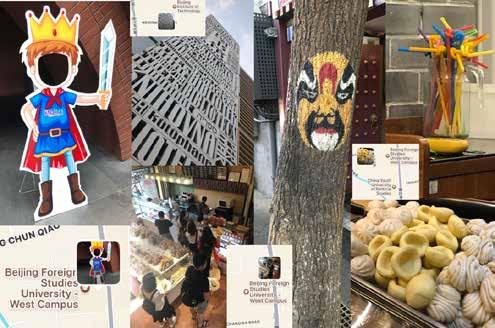
more powerful than I had expected, deeply rooted in centuries of knowledge and in everyday experiences.
What I learned as an art educator and researcher in the first pilot approach to Piggybacking in Antigua, Guatemala
was that connecting participants in different places or from different cultural backgrounds to explore diverse artistic traditions, practices, and worldviews fostering mutual understanding of artistic heritage was amazing, even with a few roadblocks. The more local Piggybacking approach in Beijing, China
connected students and the experiences they were engaged in, in novel ways being more personally focused at the local level. They had opportunities to share their world view, family practices, and creative connoisseurship that they valued with their peers. Whether in similar or different places and/or cultural backgrounds, diverse artistic interpretations made visible innovative approaches to art, enriching arts-based learning through collaborative technology. I learned that in my method of Piggybacking, the experiences could easily fold into parts of curriculum with clear but flexible objectives and organized schedules for those who want to join synchronously (which was the goal). It also provided for paired and small group opportunities (piggy backers with those on-site) that are flexible but within the scope of the learning experiences and outcomes for both the place-based and virtual student learners reinforcing inquiry making them researchers.
Since Piggybacking reshapes traditional pedagogical paradigms by integrating technology to facilitate intercultural dialogue and exchange in arts place-based teaching, learning, and research, several things need to be considered. Environments need to be carefully curated to promote meaningful interaction among both on-site and virtual participants relying on neither the unstructured nor the purely self-directed; but instead, encourage collaboration while addressing specific learning goals. The Piggybacking model aligns with constructivist learning theories, where students actively construct
knowledge through interaction avoiding being passive recipients of cultural knowledge, and instead co-creators of understanding, negotiating meaning and exploring diverse perspectives. Ullom (2017) supports this by noting that promoting intercultural competence through technology is critical for understanding diverse artistic and cultural practices, as these interactions can often mirror real-world intercultural dynamics, making this type of virtual exchange a valuable tool for experiential learning. The curricular structure of Piggybacking combines synchronous and asynchronous modes of communication. Synchronous exchanges, such as skype, facetime, zoom, wechat, or whatsapp (assuming participants have a phone and it has a data connection) contribute to live discussions, fostering real-time dialogue, and build rapport among both on-site and virtual participants. Asynchronous activities do occur outside of the experiences themselves, but Piggybacking itself provides time for engagement with peers and a deeper reflection and allows participants to collaboratively experience multiple worlds simultaneously as learning and research. However, it is important to always make space for a blended approach to ensure inclusivity by accommodating different learning styles and time zones, creating a more equitable learning and research experience.
Technology is central to the success of Piggybacking. Piggybacking is designed to facilitate communication, collaboration, and knowledge-sharing across space and place. Tools such as Zoom, Skype, and other apps and platforms provide the infrastructure for meaningful interaction. Studies from
the INTENT project (2014) reinforce this notion as VE provides the ability to create meaningful exchanges in digital spaces, enhancing the depth of learning experiences (Hagley & Cotter, 2019). However, the success of VE goes beyond the tools and depends on how technology is leveraged to create engaging and inclusive experiences for art learning, making, talking about, and investigating. In the area of art learning, adding haptic and sensorial experiences through Piggybacking enriches learning through memory, developing Wonder, and inviting deeper investment and commitment to learning experiences.
The success of Piggybacking depends heavily on how the art educator facilitates the opportunities and how the curriculum is organized. We, as art educators, should design and guide the learning experience, ensuring that interactions are purposeful, inclusive, and aligned with learning objectives. The following are important factors to consider for designing these experiences.
1) Art Educators should create structured activities that encourage meaningful interaction and reflection in their curriculum design aligning with broader educational goals, such as promoting intercultural exploration, learning about art cultures, or art venues, or addressing specific topics.
2) Art educators should provide guidance and support to students, ensuring that interactions are respectful and productive, keeping focused on the learning at hand and being prepared to manage communication or technical issues.
3) Art educators should use assessment and encourage participants to
reflect on their experiences, connecting their learning to broader concepts which helps participants internalize their learning.
Ullom’s (2018) study suggests that educators should consider embedding globally networked learning experiences into curriculum and develop lesson plans involving globally networked learning. I would not only encourage the global, but local experiences as well. This is my recommendation for all art educators who strive to develop and implement local to global connected curriculum.
While Piggybacking offers significant benefits, it also presents challenges that must be addressed to ensure its success. There are four identified issues to consider: digital divide, cultural awareness, assessment, and participant engagement. There is a digital divide, not all participants have equal access to technology or reliable internet connectivity. Addressing this digital divide requires thoughtful planning, such as providing alternative modes of participation or leveraging low-bandwidth tools. Having cultural awareness is important. As art educators, we should ensure that activities avoid generalizations or assumptions. A third consideration is assessment. Developing effective assessment tools may require collaboration among all the those involved. Lastly, and most obvious, is without participant engagement nothing happens. Maintaining engagement in a virtual environment requires careful design and facilitation. Activities must be engaging, relevant, and tailored to the needs of the participants as part of the curriculum. Lever-
age a sense of Wonder! Considering all things, the benefits outweigh its limitations. Art educators can maximize the impact for students, lasting far beyond the course.
As art education continues to evolve in response to global challenges, the Piggybacking approach represents a forward-thinking approach that aligns with the demands of the era. By combining the deep impact of intercultural dialogue with the broad reach of digital technology, we can offer a model for transformative and more collaborative learning for all. This also supports the development of global citizenship, preparing students to engage constructively with diverse perspectives, and reflect on complex global arts spaces and places. In an increasingly interconnected world, art skills and understanding are essential for personal, professional, and societal success.
Moreover, the practice of VE approaches like Piggybacking aligns with the principles of Education for Sustainable Development (ESD) (UNESCO, 2024) and the United Nations Sustainable Development Goals (SDGs) (United Nations, n.d.), particularly Goal 4 of having Quality Education fostering a more equitable and sustainable future [for art understanding and learning] (United Nation, n.d). Using approaches like Piggybacking represents a paradigm shift in art education, leveraging technology to bridge cultural and geographic divides and foster meaningful learning experiences in the arts. If we address the challenges and maximizing the opportunities of all types of virtual exchange in art education, art educators can create transformative learning environments that prepare students for the
complexities of the modern global world while showing them that the world in all its creative forms is theirs to explore and learn from. Through Piggybacking we can reimagine art education spaces for a new kind of dialogue, collaboration, and discovery—whether in foreign countries, public spaces down the street, museums, or any place creative practice is happening.
Ang, S., & Van Dyne, L. (2015). Handbook of cultural intelligence: Theory, measurement, and applications. Routledge.
Hagley, E., & Cotter, M. (2019). Virtual exchange supporting language and intercultural development: Students’ perceptions. In F. Meunier, J. Van de Vyver, L. Bradley & S. Thouësny (Eds), CALL and complexity – short papers from EUROCALL 2019 (pp. 163-168). https://doi.org/10.14705/rpnet.2019.38.1003
INTENT project group. (2014). Position paper: Virtual exchange in the European higher education area. https://www. unicollaboration.org/wp-content/uploads/2020/06/Position-paper_working_ draft10march.pdf
Powell, H. C. (2018), The alfombras: Creative acts of cultural memory in art education. International Journal of Education Through Art, 14(3), 385-392. https://doi.org/10.1386/ eta.14.3.385_3
Powell, H. C. (2020, July 16). Virtual Exchange: Piggybacking (w/guest contributor Joana Hyatt)[Webinar]. Embajada de los Estado Unidos en República Dominicana. https://www.youtube.com/ watch?v=V88rYycWI2g&feature=youtu.be
Risner, M., & Kumar, S. (2020). Internationalizing teacher education through virtual connections and blended learning. eLearn Magazine, July 2020 https://elearnmag. acm.org/archive.cfm?aid=3403401
Risner, M., & Kumar, S. (2016). Graduate student perceptions of a globally networked course. Journal of Applied Research in Higher Education, 8(3), 287-301. https://doi. org/10.1108/JARHE-01-2015-0009
Rubin, J. (2017). Embedding Collaborative Online International Learning (COIL) at Higher Education Institutions. Internationalization of Higher Education, 2, 27-44.
Sabol, R. (2022). Art education during the COVID-19 pandemic: The journey across a changing landscape. Arts Education Policy Review, 123, (3), 127–134. https://doi.org/10 .1080/10632913.2021.1931599
Sims, L. (2022). Teaching critical thinking and cultural intelligence via virtual exchange: A practice report on the utilization of research-based principles to support and assess learning outcomes. Journal of Virtual Exchange, 5, 133-143. https://doi. org/10.21827/jve.5.38804
Ullom, C.E. (2018). Developing preservice teacher global citizen identity: The role of Globally Networked Learning (GNL) (Publication No. 10688833) [Doctoral dissertation, Fielding Graduate University]. ProQuest Dissertations.
Ullom, C. (2017). Leveraging technology to create mindful intercultural learning experiences in undergraduate education. Engaging Dissonance: Developing Mindful Global Citizenship in Higher Education (Innovations in Higher Education Teaching and Learning),9, 129-156. https://doi.org/10.1108/S2055364120170000009007
UNESCO. (2024, October 23). What you need to know about education for sustainable development. UNESCO. https://www.unesco.org/en/sustainable-development/education/need-know
United Nations. (n.d.). Department of Economic and Social Affairs. Ensure inclusive and equitable quality education and promote lifelong learning opportunities for all. https:// sdgs.un.org/goals/goal4
United Nations. (n.d.). Sustainable development goals. 4 Quality education. https://www. un.org/sustainabledevelopment/education/
Warschauer, M. (1995). Virtual connections: Online activities and projects for networking language learners. Mānoa, Hawai’i: Second Language Teaching & Curriculum Center, Univ. of Hawai’i at Mānoa. https://archive.org/details/virtualconnectio0000wars ISBN 978-0824817930. OCLC 34174964
FAEA promotes visual arts education through professional development, service, advancement of knowledge, and leadership. We present public programs; sponsor institutes, conferences, and programs; publish journals, reports, and surveys; and work with other agencies in support of visual arts education.
The core of FAEA is volunteer-driven, which provides leadership, advocacy, learning, sharing, and much more. Year after year, our volunteers produce quality programs, events, and information used by visual arts educators. This past year, thousands of hours were generously donated to FAEA.
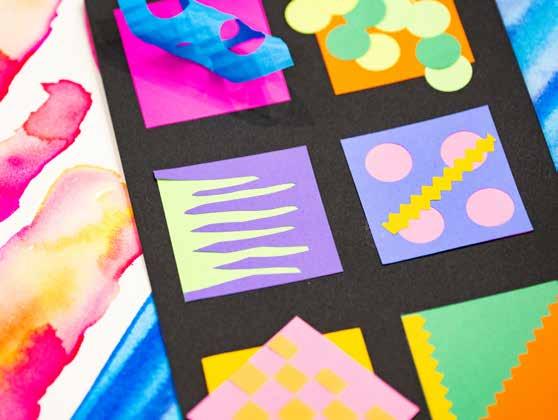


Fresh Paint is the award-winning publication of the Florida Art Education Association (FAEA) that contains articles of interest to art educators of all levels – from kindergarten through college level. It is produced 4 times annually and distributed to more than 800 art teachers, school district art supervisors, museum educators, higher education professionals, community art educators and artists, as well as other state and national art associations.
Fresh Paint is a terrific marketing tool for businesses and organizations to reach art educators and decision-makers.
Learn more at faea.org/publications/advertising
